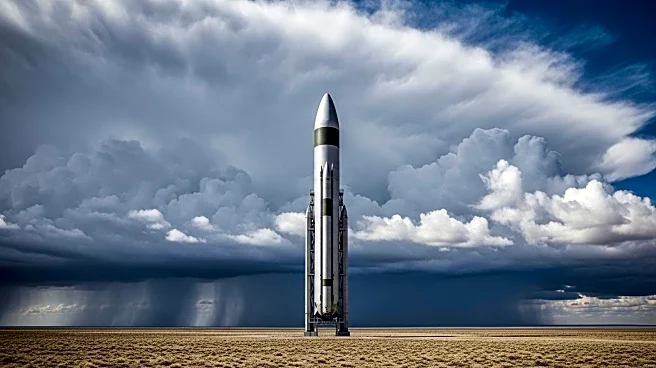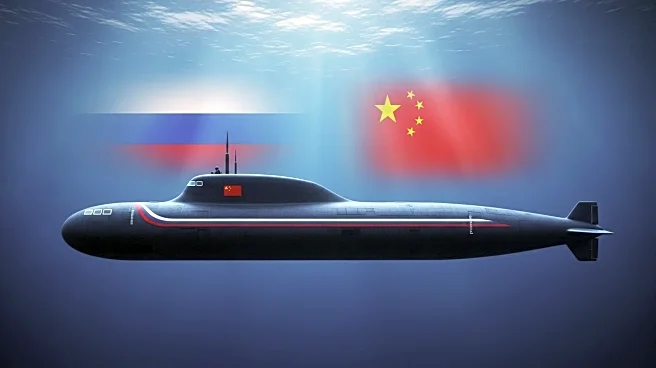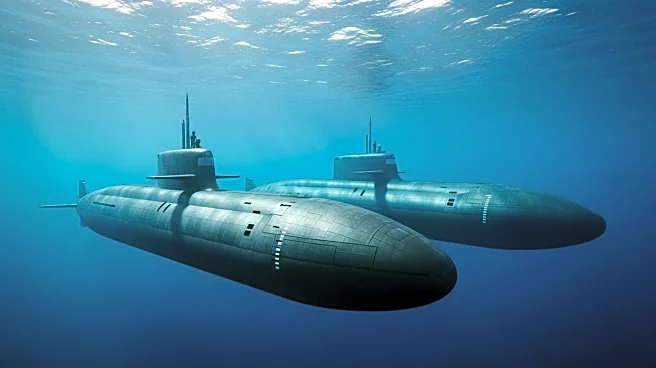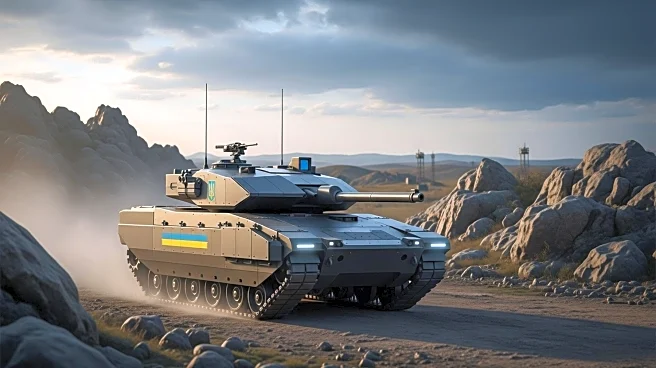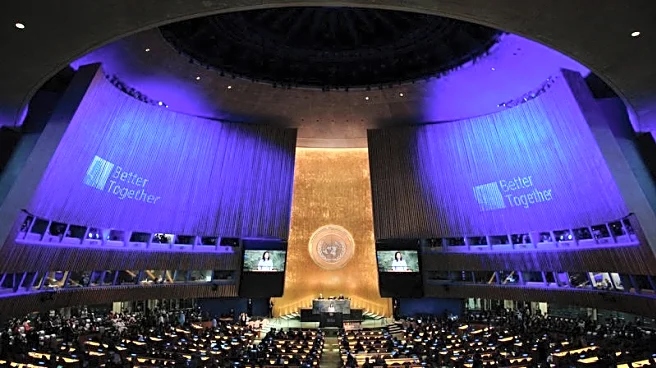What's Happening?
Since 2020, China has significantly expanded its nuclear arsenal, with projections indicating a stockpile of approximately 1,500 warheads by 2035. This development has sparked a transformation in discussions surrounding U.S. nuclear weapons policy. Admiral Charles Richard, former Commander of U.S. Strategic Command, highlighted the fundamental changes in U.S. strategic deterrence due to China's nuclear growth. In 2021, Richard informed the Senate Armed Services Committee that the U.S. is facing two nuclear-capable strategic peer adversaries simultaneously for the first time in history. He emphasized China's explosive growth and modernization of its nuclear and conventional forces, which could enable any plausible nuclear employment strategy. This situation presents a crisis in deterrence, necessitating major shifts in U.S. nuclear strategy.
Why It's Important?
The expansion of China's nuclear capabilities poses significant challenges to U.S. strategic deterrence, potentially altering the global nuclear balance for the remainder of the century. The 'two nuclear peer problem' presents an existential choice for the U.S., as its current nuclear force structure and strategy may not sustain deterrence against two nuclear peers simultaneously. The options include expanding U.S. nuclear capabilities, shifting strategy to engage nonmilitary targets, or maintaining the status quo, which could increase the risk of regional aggression and nuclear use. The discourse on this issue lacks systematic studies defining the nature of the problem and the options available to the U.S. and its allies.
What's Next?
The U.S. must decide how to respond to China's nuclear buildup, which will shape the global nuclear balance. Key questions include the threat posed by China's expanding nuclear forces and the best options for modifying U.S. nuclear force structure. The U.S. must consider whether these options effectively address vulnerabilities created by the 'two nuclear peer problem' and if they introduce new risks to U.S. and allied interests. Future discussions will likely focus on defining the problem more rigorously and exploring potential strategies for adapting U.S. nuclear planning.
Beyond the Headlines
The discourse on the 'two nuclear peer problem' does not clearly characterize the risks posed by China's expanding nuclear forces or the range of options available to U.S. officials. The need to deter two nuclear adversaries does not necessarily create a qualitatively new problem for U.S. strategic deterrence posture. The potential for Sino-Russian cooperation in various conflict scenarios adds complexity to U.S. planning, driven not only by material facts but also by expectations and risk acceptance regarding extended deterrence commitments.

